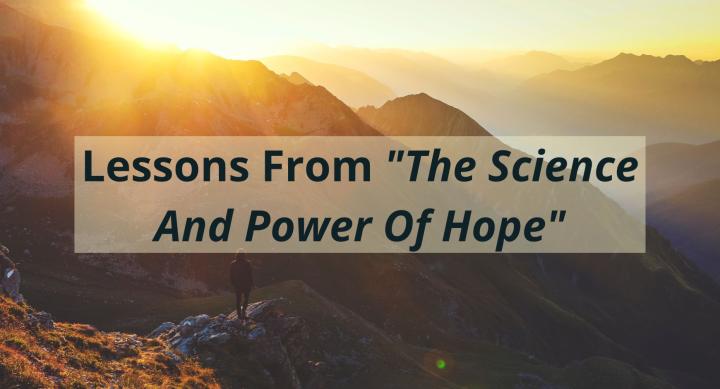
In times of adversity, the idea of having hope can sound far away and out of reach. According to an area of positive psychology called “hope theory”, hope is more than a fleeting or passive wish; hope is a way of thinking that can be taught and is associated with well-being.
In hope theory, hope is comprised of three types of thinking or perspective:
- Goal thinking: Creating desirable goals that you or your group can impact
- Pathway thinking: Figuring out ways to reach those goals and work through obstacles
- Agency thinking: Believing in our ability to work on one’s goals and pathways
For example, if someone wants change to occur by having a traffic light put in at a dangerous intersection, they could wish for the traffic light to appear or wait for others to see the need and act. These goals and pathways are unlikely to increase hope because they are not connected to goals that the person can impact or in discovering the pathways to create interest from others in getting a traffic light installed. Instead, someone could increase their hope by stating that they want to make the intersection safer by installing a traffic light and then create pathways of talking to neighbors about their concerns, going to a neighborhood association meeting or community group to share their concerns, or calling their city representatives to bring up the issue. To increase agency thinking, the client might think about times they have worked on problems like this before or think to encouragement from others in their community who are interested in this goal.
In the attached video, Dr. Chan Hellman discussed research on hope theory and looks at how adversity challenges the motivation for creating goals by increasing the focus on avoidant goals nd causing us to focus more on the short-term than long-term. Dr. Hellman discusses how to face adversity, using his own example as an undergrad student who only passed swimming his first semester and is now a PhD with a position researching hope.
Dr. Hellman shares four takeaways for connecting to hope in times of adversity:
- The ability to connect to Imagination fuels hope; fear and rumination drain willpower or agency.
- Goals need to be desirable to the person; buy-in and collaboration in goal setting is essential.
- Hope begets hope. When a person learns a task for the first time (like parallel parking in a car), they gain hope that they can complete the task again.
- Hope is a social gift and being around people who are hopeful increases your own hope.
If you would like to talk more about increasing hope, the Employee Assistance Program’s counselors are here to listen and explore. To schedule an appointment, please call 512-471-3366 or email eap@austin.utexas.edu.
